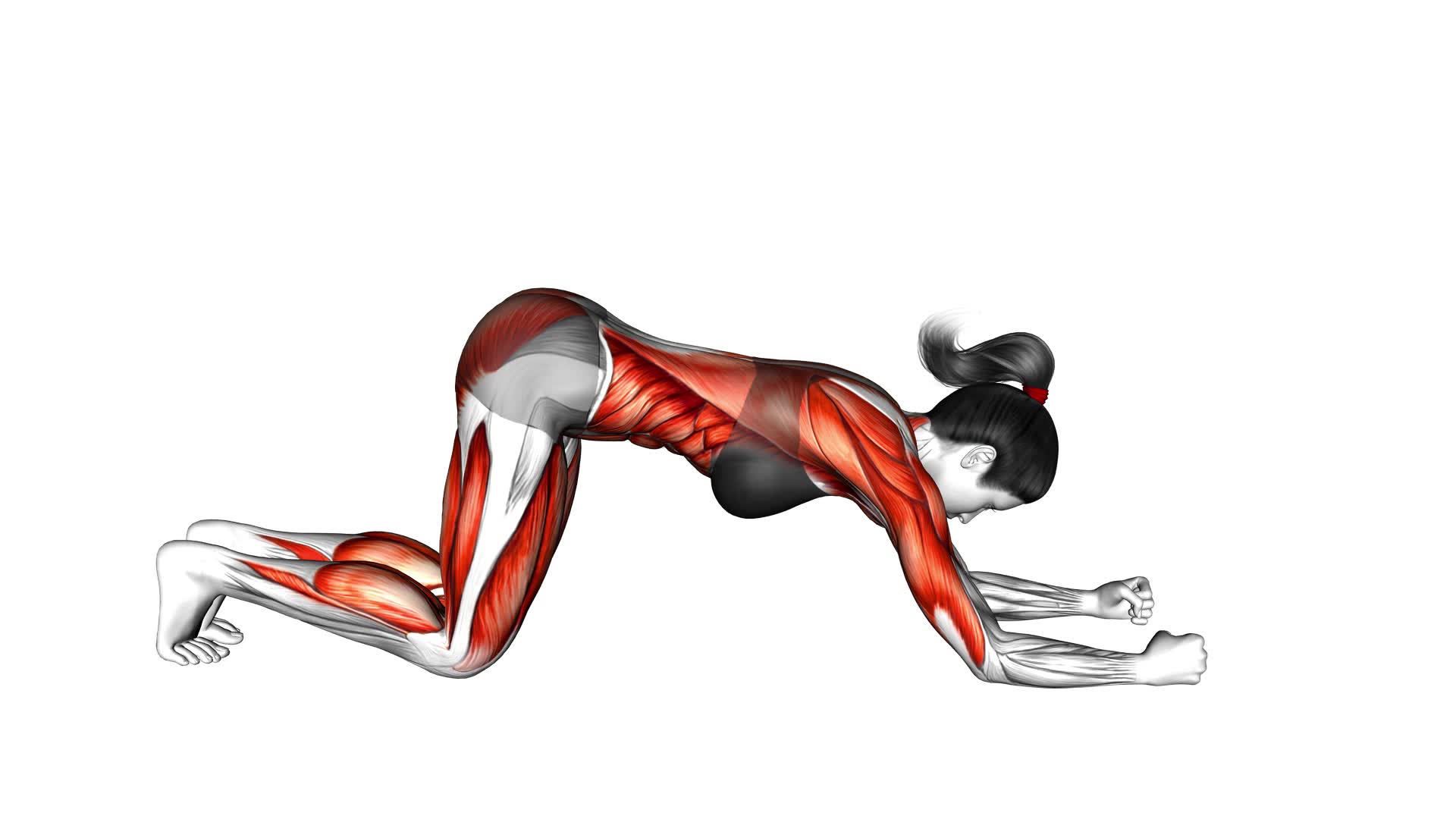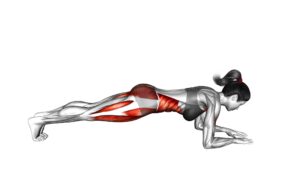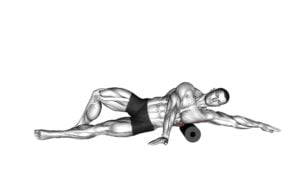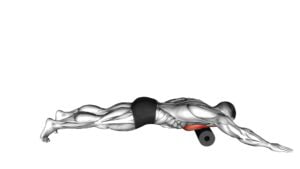Rolling Plank (female) – Video Exercise Guide & Tips

Are you looking for an effective exercise to strengthen your core? Look no further than the rolling plank!
Watch This Exercise Video
In this video exercise guide, we'll show you how to perform the rolling plank with proper form and technique. Plus, we'll share variations and progressions to challenge yourself even more.
Avoid common mistakes and get the most out of your workout with our helpful tips.
Get ready to feel the burn and rock your core with the rolling plank!
Key Takeaways
- Rolling Plank exercise strengthens core muscles
- Proper form and technique involves keeping hips lifted and body in a straight line, while avoiding sagging or rotating hips
- Variations and progressions of the Rolling Plank can challenge core muscles further and improve overall strength and stability
- Common mistakes to avoid include allowing hips to sag or lift too high, rushing through the movement, and letting shoulders round or collapse
Benefits of the Rolling Plank Exercise
One benefit of the Rolling Plank exercise is that it strengthens your core muscles. The Rolling Plank is a variation of the traditional Plank exercise, which is known for its effectiveness in targeting the core muscles. By incorporating the rolling motion into the exercise, you engage additional muscles in your core, leading to improved strength and stability.
To perform the Rolling Plank, start in a plank position with your forearms on the ground and your body in a straight line. From here, shift your weight onto one forearm and rotate your body, rolling onto the side of your foot, until you're in a side plank position. Hold for a moment, then roll back to the starting position and repeat on the other side.
If you're looking to modify the Rolling Plank, you can start by performing it on your knees instead of your toes. This reduces the intensity of the exercise while still targeting your core muscles. Additionally, you can use a stability ball or a foam roller to add an extra challenge to the exercise.
Proper Form and Technique for the Rolling Plank
Maintain proper form and technique during the Rolling Plank exercise to maximize its effectiveness. Proper form is crucial to ensure that you're targeting the correct muscles and avoiding injuries. Start by positioning yourself in a high plank position with your hands directly under your shoulders and your body in a straight line from head to toe. Engage your core and squeeze your glutes to maintain stability throughout the exercise.
As you roll to the side, make sure to keep your hips lifted and your body in a straight line. Avoid letting your hips sag or rotate. Maintain control as you roll back to the starting position. Remember to breathe steadily throughout the movement.
To modify the Rolling Plank, you can perform the exercise on your knees instead of your toes. This variation reduces the difficulty and allows you to focus on maintaining proper form.
The Rolling Plank offers numerous benefits, including strengthening your core, shoulders, and hips, improving stability and balance, and increasing overall body strength. By incorporating this exercise into your routine with proper form and technique, you can maximize these benefits and achieve your fitness goals.
Now that you understand the proper form and technique for the Rolling Plank, let's move on to the next section, which will discuss variations and progressions for this exercise.
Variations and Progressions for the Rolling Plank
Now let's explore advanced plank progressions and the benefits of the rolling plank.
These variations will challenge your core muscles even more, helping to improve strength, stability, and flexibility.
Advanced Plank Progressions
To progress your Rolling Plank exercise, try incorporating variations and progressions. By adding advanced plank variations and modifications, you can challenge your core muscles even further and improve your overall strength and stability.
One advanced plank variation is the Side Plank with Leg Lift. Start in a side plank position, with your forearm on the ground and your body in a straight line. Lift your top leg up towards the ceiling, keeping it straight and engaging your glutes and core. Hold for a few seconds, then lower your leg back down. Repeat on the other side.
Another advanced modification is the Plank with Knee Tuck. Begin in a high plank position, with your hands directly under your shoulders. Engage your core and bring one knee towards your chest, then extend it back out. Alternate between legs, keeping your hips stable and your body in a straight line.
Incorporating these advanced plank variations and modifications into your Rolling Plank exercise routine will help you take your core strength and stability to the next level. Remember to always listen to your body and modify as needed.
Benefits of Rolling Plank
By incorporating variations and progressions, you can maximize the benefits of the Rolling Plank exercise, challenging your core muscles and improving overall strength and stability.
Rolling plank modifications allow you to target specific muscle groups and increase the intensity of the exercise. One variation is the side plank roll, where you start in a side plank position and roll your body forward and backward while maintaining the plank position. This variation adds an extra challenge to your core muscles and helps improve balance and coordination.
Another progression is the rolling plank with leg lift, where you lift one leg off the ground while performing the rolling motion. This engages the glutes and hamstrings, further enhancing the benefits of the exercise for core strength and stability.
Incorporating these variations and progressions into your rolling plank routine will help you achieve better results and advance your fitness level.
Common Mistakes to Avoid During the Rolling Plank
Avoid the common mistakes that can hinder your progress during the Rolling Plank exercise. To ensure you get the most out of this exercise and prevent injury, it's important to maintain proper form and technique.
One common mistake is allowing your hips to sag or lift too high. This can strain your lower back and take away the effectiveness of the exercise. Instead, focus on keeping your body in a straight line from your head to your heels.
Another mistake to avoid is rushing through the movement. The Rolling Plank should be done slowly and controlled, with each movement deliberate and purposeful. By rushing, you risk losing the stability and engagement of your core muscles.
Lastly, avoid letting your shoulders round or collapse. This can cause unnecessary strain on your neck and shoulders. Instead, keep your shoulders strong and engaged, with your shoulder blades pulled back and down.
Tips for Getting the Most Out of Your Rolling Plank Workout
To get the most out of your rolling plank workout, it's important to focus on proper form techniques. Keep your core engaged and your body in a straight line from head to toe.
Additionally, try incorporating variations of the rolling plank that challenge you at your current fitness level, whether it's by adding a leg lift or using a stability ball.
Proper Form Techniques
Maximize your Rolling Plank workout with these proper form techniques.
To ensure you get the most out of your exercise, it's important to avoid common mistakes. One common mistake is sagging your hips or arching your back, which can put strain on your lower back. Instead, engage your core muscles to keep your body in a straight line from your head to your heels.
Another mistake is rushing through the movement. Slow and controlled movements will help you maintain proper form and engage your muscles more effectively.
Here's a sample workout to help you practice proper form: start by getting into a high plank position with your hands directly under your shoulders. Engage your core and slowly roll onto your right forearm, keeping your body in a straight line. Hold for a few seconds, then roll back to the starting position and repeat on the left side. Aim for 10 reps on each side.
Variations for All Levels
To enhance your Rolling Plank workout and optimize results, try incorporating variations suitable for all fitness levels. Different plank variations can target different muscle groups and add intensity to your routine.
For beginners, there are modifications available to help build strength and stability. If you're just starting out, you can begin with a modified plank by resting on your knees instead of your toes. As you progress, you can try a side plank variation by lifting one arm or leg off the ground.
For advanced practitioners, you can challenge yourself by incorporating movements such as knee tucks or mountain climber planks. Remember to listen to your body and choose variations that suit your current fitness level.
Sample Rolling Plank Workout Routine
Achieve optimal core strength and stability with this effective Rolling Plank Workout Routine. The rolling plank is a challenging exercise that targets your core muscles, helping you to build strength and improve stability. By incorporating different variations and modifications into your workout routine, you can continuously challenge yourself and see progress over time.
Here is a sample workout routine to get you started:
- Basic Rolling Plank: Start in a high plank position with your hands directly under your shoulders. Engage your core and slowly roll onto one forearm, keeping your body in a straight line. Hold for a few seconds, then return to the starting position. Repeat on the other side. Aim for 10-12 reps on each side.
- Side Plank with Leg Lift: Begin in a side plank position with your forearm on the ground and your feet stacked on top of each other. Lift your top leg as high as you can while maintaining balance and control. Lower it back down and repeat on the other side. Perform 8-10 reps on each side.
- Rolling Plank with Knee Tuck: Start in a high plank position and roll onto one forearm. From here, bring your knee towards your chest, engaging your core. Extend your leg back out and return to the starting position. Repeat on the other side. Aim for 10-12 reps on each side.
Incorporate these exercises into your routine to enhance your core strength and challenge yourself with the rolling plank. Remember to listen to your body and modify as needed.
Frequently Asked Questions
How Many Calories Can Be Burned by Doing the Rolling Plank Exercise?
Incorporating the rolling plank exercise into your workout routine has several benefits.
Not only does it strengthen your core, but it also engages your arms, shoulders, and legs.
By adding variations to the rolling plank, you can increase the calorie burn.
For example, try lifting one leg or adding a side plank twist.
These variations challenge your muscles and elevate your heart rate, resulting in a higher calorie burn during your workout.
Can the Rolling Plank Exercise Help in Reducing Belly Fat?
The rolling plank exercise can be effective in reducing belly fat as part of an overall weight loss plan. By engaging your core muscles and increasing your heart rate, this exercise helps burn calories and promote fat loss.
Incorporating the rolling plank into a well-rounded fitness routine that includes cardio and strength training can further enhance its effectiveness. Remember to consult with a fitness professional for personalized advice and guidance.
Is the Rolling Plank Exercise Suitable for Beginners?
The rolling plank exercise is a great choice for beginners looking to strengthen their core. It offers several modifications that can be used to adjust the intensity level to fit your fitness level.
By performing the rolling plank, you can improve your core strength and stability. This exercise targets multiple muscle groups, including your abs, obliques, and lower back.
Incorporating the rolling plank into your workout routine can help you achieve a stronger and more toned midsection.
What Are the Muscles Targeted by the Rolling Plank Exercise?
The rolling plank exercise targets multiple muscles in your body. It primarily works your core muscles, including your abs, obliques, and lower back. By performing this exercise, you can strengthen and tone your core, improving your overall stability and balance.
Additionally, there are variations of the rolling plank that can challenge advanced fitness levels. These variations can further engage your shoulders, chest, and glutes, providing a full-body workout.
Can the Rolling Plank Exercise Be Modified for Individuals With Lower Back Pain?
If you're dealing with lower back pain, modifying the rolling plank exercise can help provide relief. By adjusting the intensity and range of motion, you can still benefit from core strengthening while minimizing strain on your lower back.
Engaging your core muscles and maintaining proper form are crucial. Consult with a fitness professional to ensure you're performing the modified rolling plank correctly and safely.
Conclusion
In conclusion, the rolling plank exercise is a highly effective workout that targets the core muscles and improves overall stability.
By maintaining proper form and technique, you can maximize the benefits of this exercise and avoid common mistakes.
Additionally, incorporating variations and progressions into your routine can help challenge your muscles and keep your workouts interesting.
Remember to follow the tips provided to get the most out of your rolling plank workout and achieve your fitness goals.

Author
Years ago, the spark of my life’s passion ignited in my mind the moment I stepped into the local gym for the first time. The inaugural bead of perspiration, the initial endeavor, the very first surge of endorphins, and a sense of pride that washed over me post-workout marked the beginning of my deep-seated interest in strength sports, fitness, and sports nutrition. This very curiosity blossomed rapidly into a profound fascination, propelling me to earn a Master’s degree in Physical Education from the Academy of Physical Education in Krakow, followed by a Sports Manager diploma from the Jagiellonian University. My journey of growth led me to gain more specialized qualifications, such as being a certified personal trainer with a focus on sports dietetics, a lifeguard, and an instructor for wellness and corrective gymnastics. Theoretical knowledge paired seamlessly with practical experience, reinforcing my belief that the transformation of individuals under my guidance was also a reflection of my personal growth. This belief holds true even today. Each day, I strive to push the boundaries and explore new realms. These realms gently elevate me to greater heights. The unique combination of passion for my field and the continuous quest for growth fuels my drive to break new ground.







